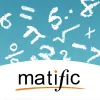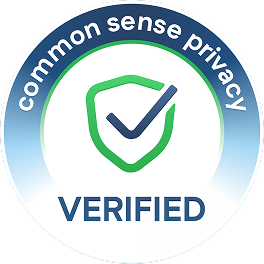
Digital Citizenship Week is October 20–24!
Join teachers worldwide to promote a healthy, positive approach to media and tech.
Take a look inside 8 images
Matific
Pros: A variety of activities help kids gain a conceptual understanding of important K–6 math skills.
Cons: An adaptive feature could help teachers in meeting kids right at their level.
Bottom Line: An engaging conceptual supplement for math lessons with easy-to-find standards-aligned activities.
Matific's feedback to students is subtle, encouraging a kind of trial-and-error method to find a working solution. Some activities even let incorrect answers play out in a given situation, so students can determine how to correct their work.
Selected games and activities could be used as a preview for certain concepts. Assign students an activity and have them work individually before bringing small groups together to review the answers and share strategies. Use the Classcast feature to cast a lesson to every student's device at the same time, for whole-group discussion and synchronous lessons.
While certain activities teach with this trial-and-error method, many other activities present practice in a more traditional way. Students make a few attempts to choose the correct answer before the program shows the correct answer and moves them along to the next question. Teachers should be selective and choose these types of activities as practice only after covering the concepts in class.
Online, you can keep track of students' progress and identify any areas for improvement. However, you'll need to keep up with your kids and assign additional work on your own, as the program won't automatically assign or adapt to students' individual skill levels.
Matific is a collection of interactive math games and activities (on the website, tablet, or Chrome app) for grades K-6 aimed at helping kids build a conceptual understanding of various foundational skills. It has a variety of activities, assessment practice, and worksheets that you can search by grade level and topic. Aside from assessments, content comes in four forms: worksheets, episodes, word problems, and workshops. Students can complete worksheets online or teachers can print them. Episodes offer more prolonged practice around a concept, and the word problems give kids a visual framework for the problem they're working on. For a more open-ended experience, teachers can use workshops that present things like number lines or pizzas to play around with concepts like integers and fractions.
Teachers can assign each class to a textbook or to one of the selected state curricula to help narrow the focus to aligned activities. Activities include teacher guides that point out where each activity fits into the curriculum and offer suggestions for fitting the activity into a classroom lesson. Matific integrates with Google Classroom, making it more convenient to assign activities. There's also a pacing guide if you want to plan out the year. Reporting options include color-coded progress reports, which show results, number of attempts, and the duration of attempts to give a clear picture of student level.
Matific's engaging resources are well organized by grade and by content, and should be easy for teachers to integrate into the lessons they're already teaching. Activities cover numerous K-6 Common Core domain skills. But the activities are a bit more sophisticated than your average drills. For example, if kids are working on ratios, they might do an activity that involves a caterpillar climbing a portion of a flower stem. If they get stuck, they can access a hint that might get them back on track. Trial-and-error methods for some activities create an engaging play-like atmosphere for learning.
All grades include interactive activities and PDF worksheets. Some activities are repeated from one grade to the next, but in these cases, difficulty and complexity are increased. Since the worksheets are available to complete online or for printing, teachers are more able to give kids what they need despite the absence of technology at home. And since content comes in lots of languages, more students can use it with less struggle. Having a bit more instructional feedback when kids get problems wrong and suggesting content for kids to help teachers differentiate more effectively would be helpful. But overall, Matific is a solid choice as a supplemental tool for reinforcing kids' conceptual understanding of foundational math skills.

















